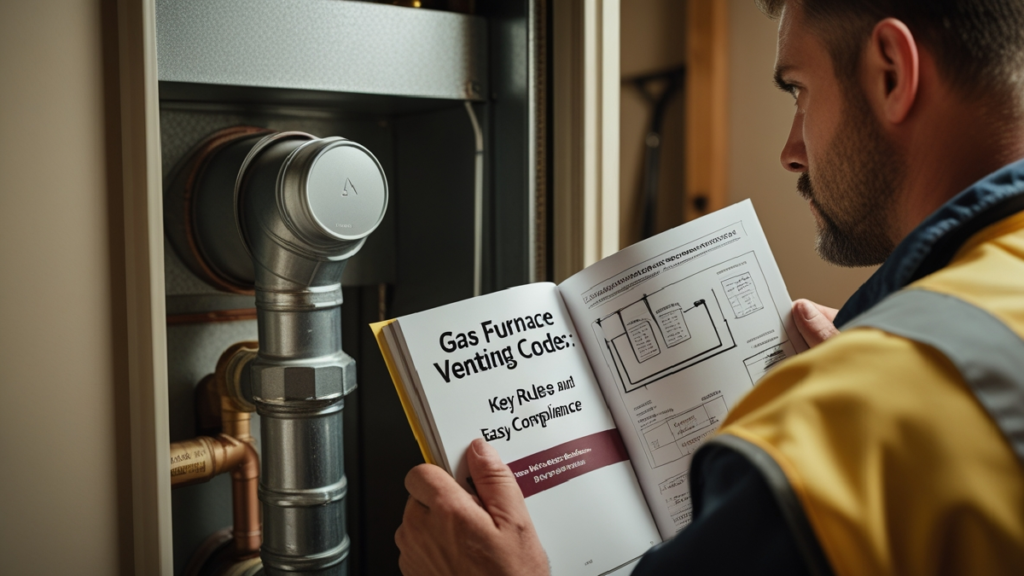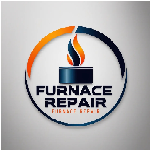Understanding the Importance of Gas Furnace Venting Codes
Gas furnace venting codes are fundamental regulations that serve to safeguard the health and safety of building occupants while ensuring the efficient operation of gas-powered heating systems. These codes are established by a combination of national standards and local amendments to address the unique environmental and structural conditions of different regions.
Their primary purpose is to regulate how combustion gases, including potentially hazardous carbon monoxide, are safely expelled from the building to prevent dangerous accumulations indoors.

Ensuring proper venting is not merely a matter of compliance; it directly impacts indoor air quality, fire safety, and the longevity of the heating system. Improperly vented furnaces can lead to carbon monoxide leaks, which are odorless, tasteless, and potentially fatal. They can also cause structural damage due to moisture buildup or corrosion if venting systems are not correctly installed or maintained.
For homeowners, understanding gas furnace venting codes means taking proactive steps to protect their families and property. For HVAC technicians and contractors, adherence to venting regulations is essential to prevent liability, ensure customer safety, and maintain professional standards.
This comprehensive guide aims to clarify the critical aspects of gas furnace venting codes, emphasizing the importance of compliance through detailed explanations of regulations, best practices, and ongoing maintenance. Whether you are a homeowner seeking to understand your system better or a professional tasked with installation and upkeep, this resource will help you navigate the complex landscape of venting standards with confidence and clarity.
Historical Evolution and Regulatory Framework of Gas Furnace Venting Codes
The development of gas furnace venting codes has been a gradual process shaped by technological advancements, safety concerns, and regulatory responses. In the early days of gas heating systems, venting requirements were minimal, often relying solely on manufacturer recommendations without standardized regulations. This lack of regulation sometimes resulted in unsafe installations, leading to incidents of carbon monoxide poisoning, fires, and structural damage.
As the understanding of combustion safety improved and incidents increased, regulatory agencies such as the National Fire Protection Association (NFPA) and the International Mechanical Code (IMC) began to establish formal standards. These organizations continuously review and update their guidelines to incorporate new research, emerging technologies, and lessons learned from past failures.
At the local level, jurisdictions adopt and adapt these national standards to suit regional conditions, climate, and building practices. For example, areas with heavy snowfall may require specific venting configurations to prevent blockages, while regions prone to high humidity might emphasize corrosion-resistant materials. Staying compliant with gas furnace venting codes and evolving standards is crucial for legal adherence, insurance requirements, and most importantly, the safety of those inhabiting the building.
Core Principles of Gas Furnace Venting Regulations
The bedrock of gas furnace venting codes rests on a set of core principles designed to ensure the safe removal of combustion byproducts and protect indoor air quality. These principles include the proper design, installation, and maintenance of venting systems, with an emphasis on preventing the backflow of gases, ensuring durability, and avoiding obstructions.
Primarily, the venting system must be capable of directing combustion gases, including carbon monoxide, safely outside the building. This involves selecting appropriate materials that can withstand high temperatures and corrosive gases. Metal pipes (such as galvanized steel or stainless steel) are commonly used because of their durability.
For condensing furnaces, approved plastic venting materials like PVC or CPVC are permitted under specific conditions but must meet strict standards for temperature resistance.
Placement and configuration are equally important. Proper clearances from combustible materials, windows, doors, and air intakes are mandated to prevent fire hazards and re-entry of exhaust gases. The system should be designed to prevent backdrafting by ensuring adequate vertical rise and proper termination points.
Finally, the sizing of vent pipes must align with the furnace’s specifications. An undersized vent can cause dangerous backpressure, while an oversized vent may reduce efficiency. Proper sealing and condensate drainage are also essential to prevent corrosion or blockages.
Key Regulations for Gas Furnace Venting Materials and Components
The selection of venting materials and components is a critical aspect of compliance with gas furnace venting codes. Regulations specify which materials are approved based on their ability to withstand high temperatures, resist corrosion, and prevent leaks.
Metal vent pipes — such as galvanized steel, stainless steel, and aluminum — are the most common and widely accepted materials due to their strength and durability.
Plastic vent pipes, including PVC, CPVC, and polypropylene, are permitted in certain applications, particularly for condensing furnaces, provided they meet specific standards for temperature and chemical resistance.
All vent components — including caps, dampers, and termination fittings — must meet safety standards and be compatible with the chosen venting material.
Adherence to manufacturer instructions is essential for all components, as improper installation or substitution with non-approved parts can compromise safety and void warranties. Regular inspection and maintenance of venting components are mandated to ensure ongoing compliance and performance.
Proper Installation Practices to Meet Gas Furnace Venting Codes
Proper installation is the cornerstone of compliance with gas furnace venting codes. It begins with a thorough site assessment, which involves evaluating the building’s structure, local environmental conditions, and existing venting infrastructure.
Key considerations during installation include maintaining correct vertical and horizontal clearances, ensuring appropriate slope (about 1/4 inch per foot), sealing joints with approved materials, and supporting all vent components to prevent sagging.
The termination point must be positioned safely — typically at least 3 feet from windows, doors, and air intakes — to prevent exhaust gases from re-entering the building.
Professional installation by licensed HVAC technicians is strongly recommended to avoid backdrafting, inefficiency, or hazardous emissions. Regular inspections help maintain safety and compliance throughout the furnace’s lifespan.
Maintenance and Inspection Requirements for Gas Furnace Venting Systems
Maintaining compliance with gas furnace venting codes involves routine inspection and maintenance beyond installation. Regular checks help identify corrosion, cracks, blockages, or damage.
Cleaning of vent components may be necessary to remove debris or soot. Termination points should also be checked for weather damage or obstruction.
Annual inspections, especially before the heating season, are recommended by HVAC professionals to ensure safety and efficiency. Homeowners should watch for warning signs such as odors, pilot light issues, or inconsistent heating — all potential indicators of venting problems.
Common Violations and How to Avoid Them
Understanding common violations of gas furnace venting codes can help prevent costly penalties, safety hazards, and system failures. Typical violations include using non-approved vent materials, incorrect sizing of vent pipes, inadequate clearances from combustible materials, and poor installation practices that lead to leaks or blockages.
To avoid these violations, it is crucial to follow all manufacturer instructions and comply with local building codes. Properly sizing the vent according to the furnace’s specifications prevents backpressure and ensures efficient operation. Maintaining adequate clearances from combustible materials, windows, and air intakes is essential for safety and code compliance. Regular maintenance and inspections are also vital to identify early signs of deterioration or improper functioning.
By adhering to these best practices, homeowners and professionals can ensure that the venting system remains safe, efficient, and compliant with all relevant standards, ultimately protecting lives and property.
Staying Updated with Gas Furnace Venting Codes and Regulations
Codes and standards governing gas furnace venting codes are dynamic and subject to periodic updates based on new safety research, technological innovations, and lessons learned from past incidents. Staying informed about these updates is crucial for maintaining compliance and ensuring safety.
Homeowners should regularly consult local building departments, industry associations, and professional HVAC organizations to access the latest standards. HVAC professionals should participate in ongoing training, certification programs, and industry seminars to stay current with evolving regulations. Manufacturers also provide updates and revised guidelines, which must be incorporated into installation and maintenance practices.
Proactive engagement with current standards not only ensures legal compliance but also enhances safety, system efficiency, and peace of mind for all building occupants. Regularly reviewing updates and implementing necessary changes is a best practice that benefits everyone involved.
Conclusion: Ensuring Safe and Compliant Gas Furnace Venting
Gas furnace venting codes are integral to maintaining a safe, efficient, and reliable heating system within any building. Compliance involves understanding the regulations, selecting appropriate materials, executing proper installation, and performing routine maintenance.
For homeowners, partnering with qualified HVAC professionals and staying informed about current standards is essential to safeguard their families and property.
Adhering to these regulations not only ensures legal compliance but also promotes a healthier indoor environment by preventing dangerous gas leaks and structural damage. Proper venting is a vital component of responsible homeownership and professional HVAC practice, ultimately contributing to peace of mind and long-term safety. Remember, safety always comes first—investing in correct venting practices is an investment in the well-being of everyone in the building.
Related Resource: Learn more about troubleshooting heating issues such as fan not turning on furnace — and follow us on Facebook for more HVAC safety and maintenance updates.


Leave a Reply